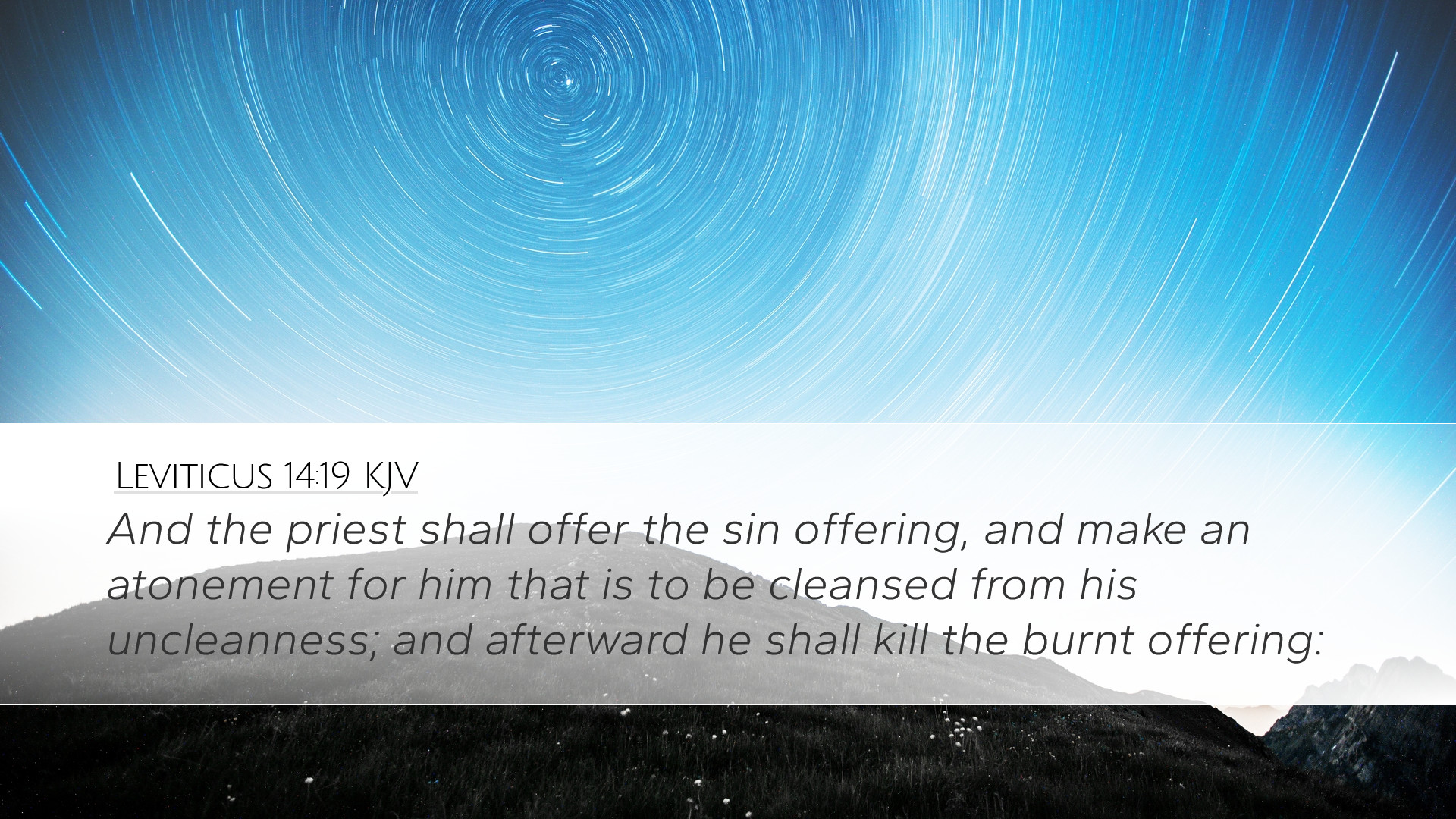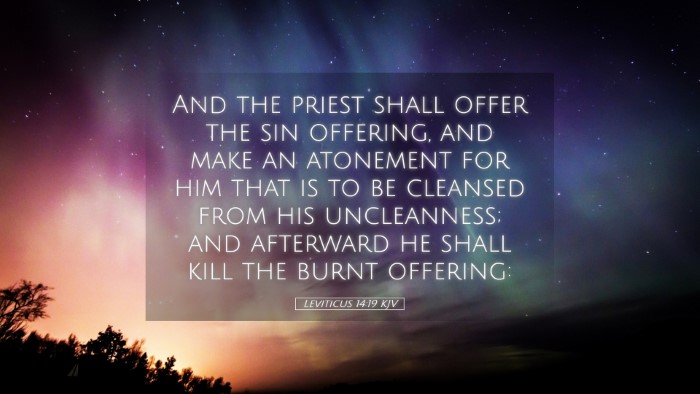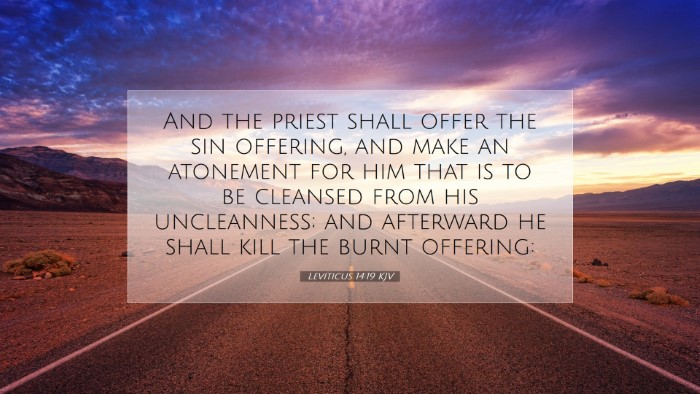Leviticus 14:19 Commentary
Verse Text: "And the priest shall offer the sin offering, and make an atonement for him that is to be cleansed from his uncleanness; and afterward he shall kill the burnt offering."
Introduction
This verse is a critical component within the broader context of Leviticus 14, which deals with the ceremonial cleansing of a leper. The nuances of this ritual illustrate the complexity and depth of the Old Testament law, underscoring themes of sin, atonement, and the sacred responsibility of the priesthood. This commentary distills insights from various public domain scholars to enrich understanding of this passage for contemporary readers including pastors, students, and theologians.
Contextual Overview
The chapter begins with the procedure for diagnosing leprosy and culminates in the rites surrounding the restoration of an individual to the community after healing. Leviticus 14:19 is situated at a pivotal moment in this process, reflecting both the ritualistic and redemptive aspects of the law.
The Role of the Priest
Matthew Henry emphasizes the crucial function of the priest in this process. The priest acts as an intermediary between the individual and God. Those being cleansed must rely on the priest’s authority and guidance for atonement. This not only shows the necessity of human mediation in spiritual matters but also symbolizes the ultimate priesthood of Christ, who offers Himself as the final sacrifice for sin.
Atonement through Sacrifice
Albert Barnes elaborates on the significance of the sin offering mentioned in the verse. The act of offering a sin offering is vital in atoning for the guilt associated with sin, illustrating the principle that without the shedding of blood, there is no remission of sins (Hebrews 9:22). The sin offering represents the gravity of sin and the need for divine forgiveness, echoing throughout the Old Testament and culminating in the New Testament with Jesus’ sacrificial death.
-
Functional Aspects: The sin offering highlights God’s provision for humanity’s moral failures, ensuring that the leper’s condition is not permanent and that societal and spiritual restoration is possible.
-
Symbolism of the Burnt Offering: Following the sin offering, the burnt offering symbolizes total devotion and commitment to God. This offering represented a whole-hearted dedication to rectification of both the individual and communal relationship with God.
Theological Implications
Adam Clarke delves into the theological ramifications of Leviticus 14:19, indicating that this verse encapsulates the holistic nature of atonement, which includes both forgiveness and renewed fellowship with God. Clarke posits that these rituals were not mere ceremonial duties but crucial acts leading to an experiential relationship with God, where one is cleansed from impurity and restored into communion with Him.
Spiritual Reflection
This passage compels modern believers to reflect on the nature of sin and the grace involved in atonement. Just as the leper was cleansed through the priest’s offerings, so too are believers cleansed through the shed blood of Christ. This realization should inspire gratitude and a commitment to live in such a way that honors the sacrifice made for their sins.
Application for Ministry
For pastors and church leaders, this verse illustrates the importance of teaching the congregation about the nature of sin and the necessity of Christ as our High Priest. Engaging with the sacrificial system in Leviticus allows ministers to communicate the gravity of sin and the significance of Christ’s atoning work effectively. Insights from this verse encourage a holistic approach where believers are encouraged to seek both forgiveness and transformation in their walks with God.
Conclusion
Leviticus 14:19 serves as a powerful reminder of the seriousness of sin, the need for atonement, and the profound role of the priesthood. It encapsulates the essential truths of the Christian faith: that one can be cleansed and restored through sacrificial offerings, ultimately fulfilled in the person and work of Jesus Christ. As believers continue to explore this passage, it challenges them to fully understand the cost of their redemption and their ongoing need for God’s grace.


